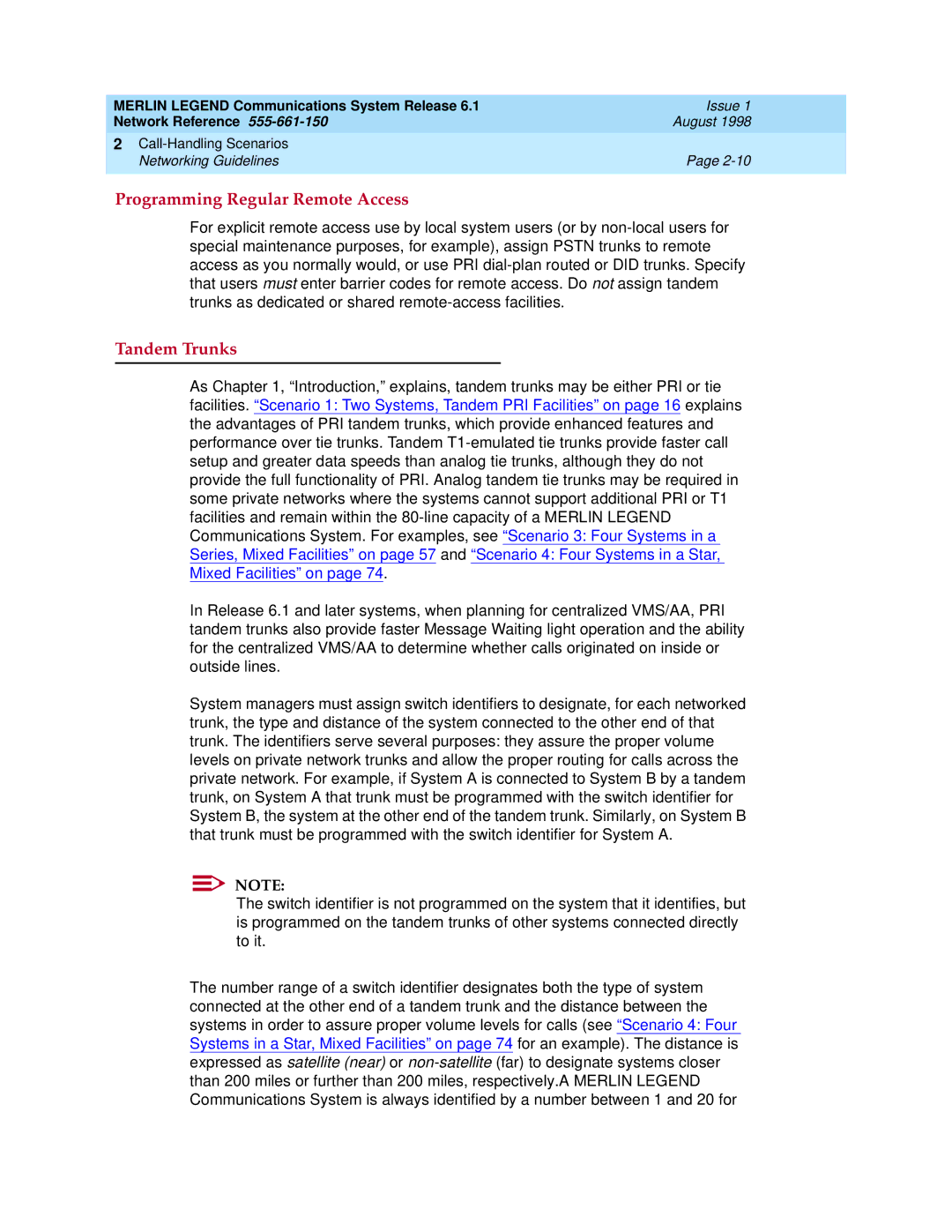MERLIN LEGEND Communications System Release 6.1 | Issue 1 |
Network Reference | August 1998 |
2 |
|
Networking Guidelines | Page |
|
|
Programming Regular Remote Access | 2 |
For explicit remote access use by local system users (or by
Tandem Trunks | 2 |
As Chapter 1, “Introduction,” explains, tandem trunks may be either PRI or tie facilities. “Scenario 1: Two Systems, Tandem PRI Facilities” on page 16 explains the advantages of PRI tandem trunks, which provide enhanced features and performance over tie trunks. Tandem
In Release 6.1 and later systems, when planning for centralized VMS/AA, PRI tandem trunks also provide faster Message Waiting light operation and the ability for the centralized VMS/AA to determine whether calls originated on inside or outside lines.
System managers must assign switch identifiers to designate, for each networked trunk, the type and distance of the system connected to the other end of that trunk. The identifiers serve several purposes: they assure the proper volume levels on private network trunks and allow the proper routing for calls across the private network. For example, if System A is connected to System B by a tandem trunk, on System A that trunk must be programmed with the switch identifier for System B, the system at the other end of the tandem trunk. Similarly, on System B that trunk must be programmed with the switch identifier for System A.
NOTE:
The switch identifier is not programmed on the system that it identifies, but is programmed on the tandem trunks of other systems connected directly to it.
The number range of a switch identifier designates both the type of system connected at the other end of a tandem trunk and the distance between the systems in order to assure proper volume levels for calls (see “Scenario 4: Four Systems in a Star, Mixed Facilities” on page 74 for an example). The distance is expressed as satellite (near) or
